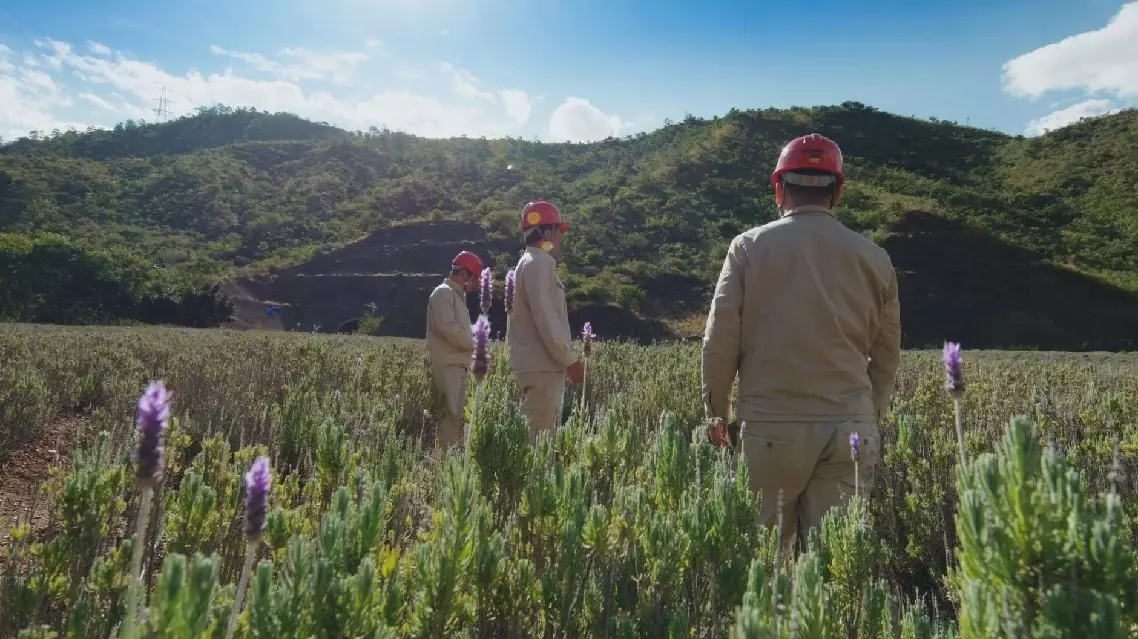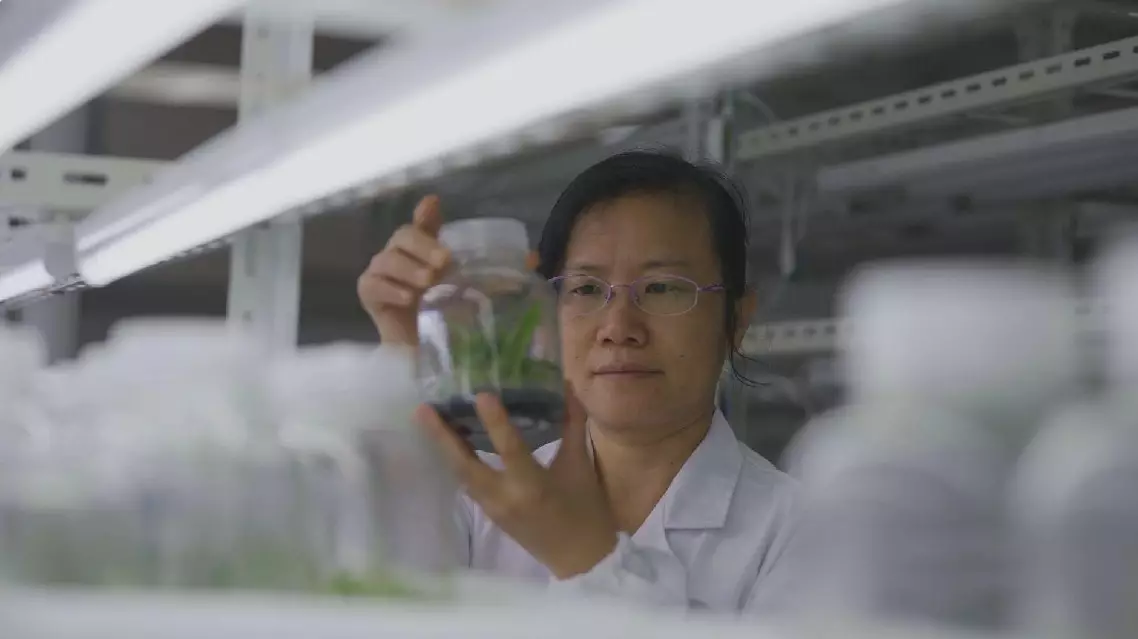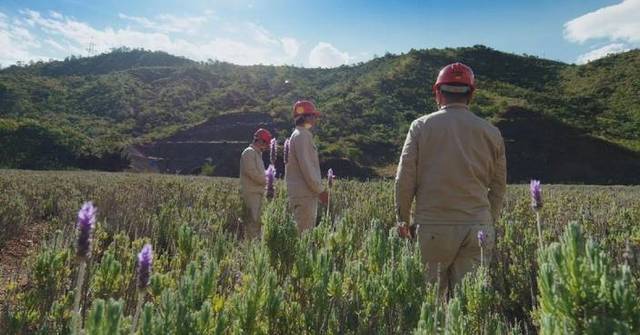Engineers have seamlessly integrated a hydroelectric power station in southwest China’s Yunnan Province into the surrounding ecological environment by protecting and transplanting rare local plants.
Liyuan Hydropower Station is located at the upper reaches of the Yangtze River, along the Jinsha River. Its left bank offers the stunning beauty of Shangri-La, while the right bank is adorned by the scenic Yulong Snow Mountain in Lijiang.
Duan Liming and his team, engineers of the Liyuan Hydropower Station, conducted extensive site surveys and ecological research during the construction process.
Duan pointed out that the Liyuan hydropower station has an installed capacity of 2.4 million kilowatts and an annual power generation of 9.474 billion kilowatt hours. As a source of green renewable energy, it can reduce the consumption of traditional coal by 3.2 million tons annually and reduce the emission of greenhouse gases and pollutants.
Duan, a hydropower engineer who is also a botanist, is fully aware of the immense impact of dams on the ecological environment. Surrounded by clear mountains and waters, Duan understands that the damage done to an aquatic ecosystem is almost irreversible.
After years of field surveys and ecological research, Duan and his colleagues are well acquainted with every rare plant that grows near the hydroelectric power station.
“This tree, called Nouelia insignis, is a rare plant in China that needs to be relocated and protected according to our environmental impact report. During the construction of the power plant, the plant species in the affected areas need to be relocated and protected according to the requirements of the report,” Duan said.
The rare botanical garden created by the engineers is a repository where various endangered plants have taken root, blossomed and borne fruit along the Jinsha River.
“These plants here are unique to our area and are called ‘Yunnan tiger hazel’. According to our environmental impact report, they also need to be transplanted and protected. We have transplanted them to five different locations in the park and they are all growing well,” Duan said.
“This is Toona ciliata, another plant that is only found in the Jinsha Valley. It was transplanted here about 5 years ago. There are two more here and five more over there. We have successfully transplanted about 15 Toona ciliata trees in this small core area,” he said.
As the river flows through the dam, delivering tremendous amounts of energy, the engineers traverse rugged mountains and experience the wonders of life on each exploration.

Engineers integrate hydroelectric power plant on the Yangtze into the surrounding environment
Researchers at the Xishuangbanna Tropical Botanical Garden of the Chinese Academy of Sciences in southwest China have focused on restoring wild populations of endangered orchids in recent years to enhance species conservation efforts and preserve local ecology.
By mimicking the natural regeneration process of epiphytic orchids, researchers have managed to significantly improve the germination rate of seeds. These techniques have ensured the survival of endangered species and the preservation of their genetic resources.
About 80 percent of orchid species are tropical epiphytes that grow on trees and have aerial roots. In nature, they form root-like mycorrhizal structures and depend on certain fungi for their survival.
These factors mean that finding the right fungi to germinate orchid seeds is crucial for artificial cultivation. It has taken scientists over a decade to perfect this sophisticated process. The symbiotic fungi of epiphytic orchids typically grow on tree bark and leaf litter, while the fungi of terrestrial orchids are found in the soil around tree roots.
To create an ideal growing environment for orchids, researchers first cultivate mushrooms, wash them to remove sugar and prevent mold, and mix them with agar in a 1:1 ratio to create a mushroom powder. After drying, this powder is put into small packets along with orchid seeds. These packets are then placed on tree trunks to germinate.
The ancient tea gardens of Xishuangbanna in southwestern Yunnan Province are vital habitats for orchids. With tall trees, dense shrubs, and diverse bird and insect species, these gardens mimic a natural forest ecosystem. Orchids, mosses, and ferns thrive in this lush environment.
The researchers have prepared a total of 700 seed packets, each containing 108 seeds of the Noble Dendrobium, a member of the Orchidaceae family. These seeds will begin their new life on the hospitable tree trunks in the gardens.
Over the next two months, fungal hyphae penetrate the seed coats, penetrate the embryonic cells and form fungal masses that release nutrients and thus ensure the successful germination of the seedlings.
This technique, which mimics the natural propagation of epiphytic orchids, increases the average germination rate of orchid seeds to over 11 percent, well above the natural rate, which normally has only a one in 10,000 chance of success.
“For species at risk of extinction, we can prioritize artificial interventions and build controlled populations. This will help prevent extinction and preserve genetic resources,” said Shao Shicheng, a researcher at the Chinese Academy of Sciences.

Chinese researchers are dedicated to reviving endangered orchids

